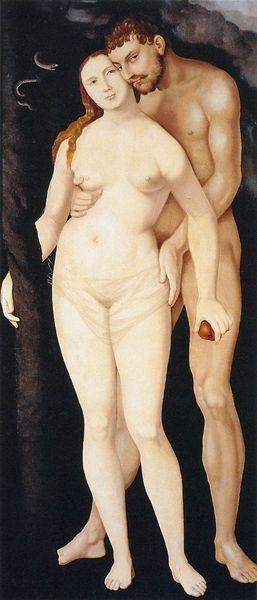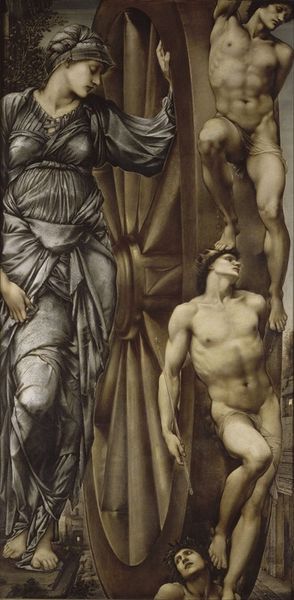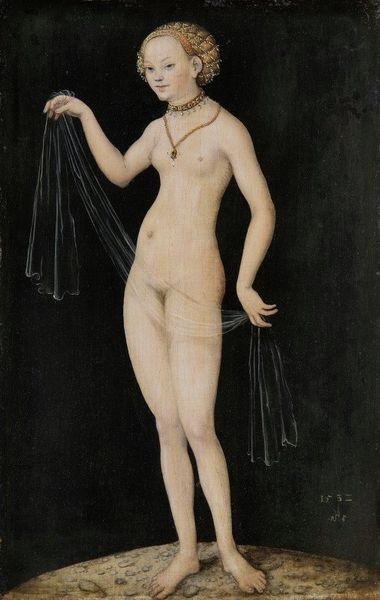
painting, oil-paint
#
portrait
#
painting
#
oil-paint
#
figuration
#
oil painting
#
mythology
#
genre-painting
#
history-painting
#
northern-renaissance
#
portrait art
Dimensions: 191.5 x 84.5 cm
Copyright: Public domain
Curator: What strikes me immediately about Hans Memling’s “Bathsheba in the Bath,” painted around 1480, is the way the subject matter, so fraught with drama and moral consequence, is rendered with such…serenity? Editor: Serenity, yes, but a troubling serenity. The lines are clean, the colours muted yet rich, but that unwavering gaze of Bathsheba pulls the viewer into a disquieting intimacy. It's almost confrontational in its quietude. Curator: Absolutely. It is Bathsheba's inner state made visible. Think about what she represents—beauty, temptation, transgression. The act of bathing is not merely practical here; it is loaded with symbolism. It suggests purification, but perhaps also vulnerability. Her exposed state is not just physical. Editor: The materiality is crucial here, too. Oil paint allowed Memling to build up layers, creating depth and luminosity, especially in the rendering of skin and fabric. Note how the draped cloth frames her, creating a secondary focal point—a study in folds and textures that almost distracts from the narrative. Almost. Curator: It's impossible to ignore the biblical narrative, David spying on Bathsheba, a king abusing his power. The architectural details, visible through the window, subtly hint at David's palace and the power dynamic at play. She is being watched, assessed. Editor: And Memling underscores that dynamic with precise brushstrokes. The dog is included, not only a decorative symbol of loyalty but it accentuates a sense of quiet complicity, even betrayal. Curator: We can trace the evolving cultural anxieties about female agency through paintings like these. This representation asks: Who controls Bathsheba's narrative? Who benefits from her objectification? Editor: Memling masterfully complicates the traditional reading of the scene. Through composition, texture, and the quiet intensity of Bathsheba’s gaze, it becomes a poignant exploration of power, desire, and female consciousness. Curator: Indeed, looking beyond the beauty on the surface brings you to an abyss of human drama. Editor: And the more you dwell on this arrangement of colour and light, the more profound its psychological impact.
Comments
No comments
Be the first to comment and join the conversation on the ultimate creative platform.













